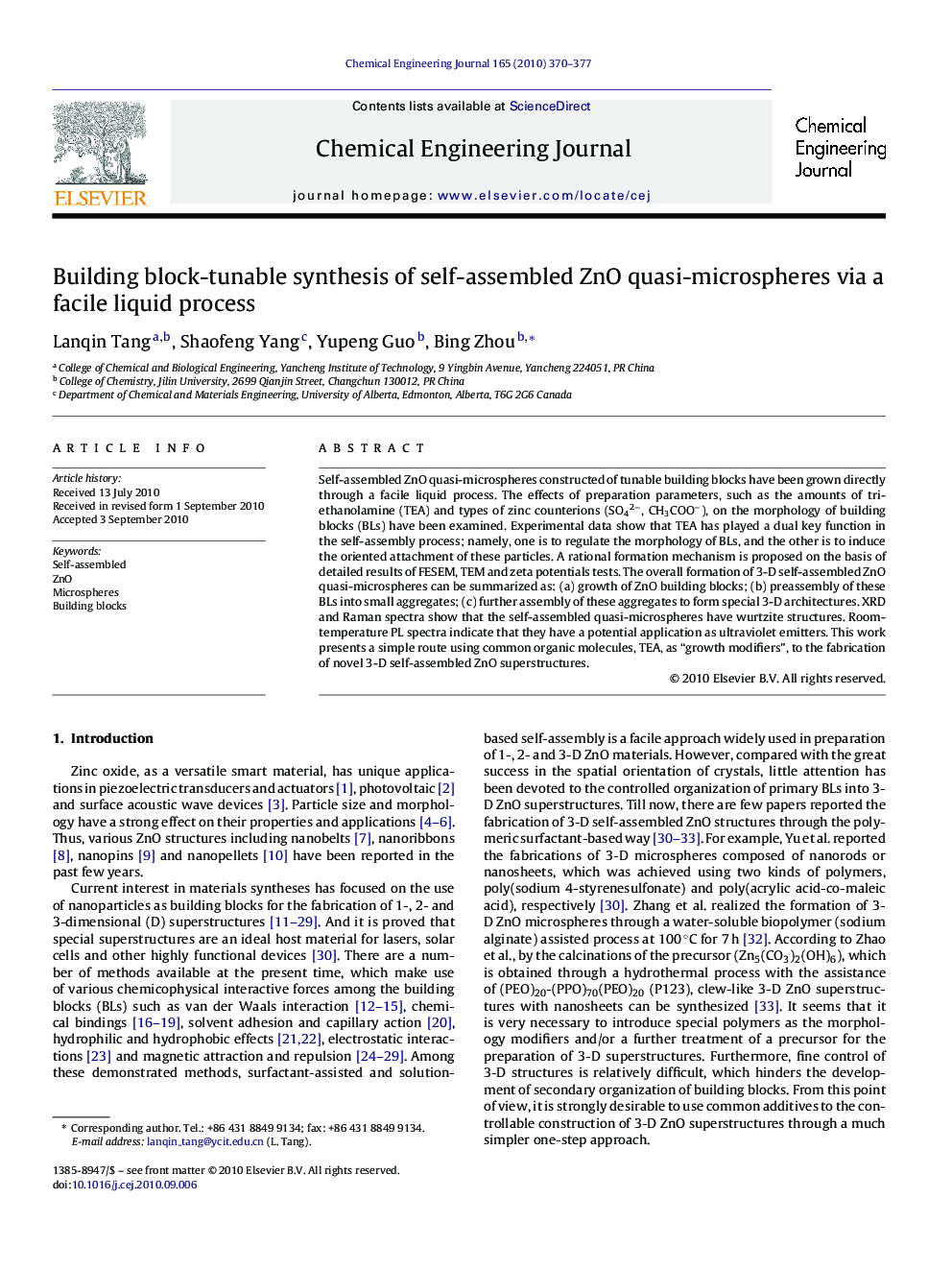| کد مقاله | کد نشریه | سال انتشار | مقاله انگلیسی | نسخه تمام متن |
|---|---|---|---|---|
| 152037 | 456485 | 2010 | 8 صفحه PDF | دانلود رایگان |

Self-assembled ZnO quasi-microspheres constructed of tunable building blocks have been grown directly through a facile liquid process. The effects of preparation parameters, such as the amounts of triethanolamine (TEA) and types of zinc counterions (SO42−, CH3COO−), on the morphology of building blocks (BLs) have been examined. Experimental data show that TEA has played a dual key function in the self-assembly process; namely, one is to regulate the morphology of BLs, and the other is to induce the oriented attachment of these particles. A rational formation mechanism is proposed on the basis of detailed results of FESEM, TEM and zeta potentials tests. The overall formation of 3-D self-assembled ZnO quasi-microspheres can be summarized as: (a) growth of ZnO building blocks; (b) preassembly of these BLs into small aggregates; (c) further assembly of these aggregates to form special 3-D architectures. XRD and Raman spectra show that the self-assembled quasi-microspheres have wurtzite structures. Room-temperature PL spectra indicate that they have a potential application as ultraviolet emitters. This work presents a simple route using common organic molecules, TEA, as “growth modifiers”, to the fabrication of novel 3-D self-assembled ZnO superstructures.
Journal: Chemical Engineering Journal - Volume 165, Issue 1, 15 November 2010, Pages 370–377